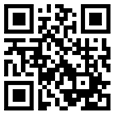0
新航道官方在线客服

阅读量:
在托福听力中做好笔记主要是为更好的答题而准备的,那么该怎样掌握好速度来做好笔记呢?无论什么样的方法,最重要的是自己能看懂!所以在掌握了做笔记的方法后,还要利用好时间多练习。
1.记关键词
所谓关键词,是指与听力中心内容有密切关系的词汇和短语,是考点的主要出处。一般是实词,即名词,动词,形容词,副词,否定和数词。抓住了听力中的关键词,整个文章的大意就呼之欲出了。因此,记录关键词是最基本的方法。
至于找关键词的方法,我附上了听力十大原则的文件,这个方式无论记不记笔记都一样的。
2. 记录细节
确定核心话题之后,我们需要做的就是记录与其相关的细节,主要的细节为what , when, where , who , why和 how等。注意记录对话和演讲中信息引导词和信息引导句后面的信息,例如, First ..., let’s look at the ..., Now, Let’s move on to ..., in the nest part of lecture, I‘d like to talk about....
3. 具体的记录方法
1)主要记录实词:名词,动词,形容词。这次词语所包含的信息量大,也是重读和重复的核心词汇。
2)采用简写、符号和缩写的速记法方法记录,例如:Q.=question,ltd.=limited, +=and/plus , ?=question ,/=or。此外,还可以用一些其它只有自己熟悉的速记符号来记录重要信息。
当然,对这些原则的熟练把握离不开勤学苦练以及词汇量的基础。考生要想在新托福的听力考试中取得理想的成绩,需要具备较强的听力理解能力和扎实的英语知识基础。IBT听力分数的提高需要广大考生持续的努力和不断总结!学会做笔记, IBT听力满分不是梦,大家可以参加小马过河的听力备考训练营来进行每天的听力备考。
实例:
下面,我以具体的例子来进行说明。注意,其中的符号是本人的个人习惯,各位考生可以根据自己的习惯创造适合于自己使用的符号,完全没有必要拘泥于本文中所用符号。
OG p157 Practice Set 1. Track01
上方为听力内容,下方为笔记,我把两者对比起来写,以便清楚地显示出听到什么内容改记下什么,怎么记。
Narrator: listen to a conversation between a student and a professor.
学生和教授之间的对话,因而在纸面的左右两侧分别写上P(代表professor) 和S(student),之后,教授说的话写左边,学生说的话写右边。
Student: Uh, excuse me, Professor Thompson. I know your office hours are tomorrow, but I was wondering if you had a few minutes free to discuss something.
S: discuss sth.
Professor: sure, john. What did you want to talk about?
Student: well, I have some quick questions about how to write up the research project I did this semester- about climate variations.
S: how 2 writ research—天气变化(单词拼写不熟悉,所以可以用中文写)
Professor: Oh, yes. You were looking at variations in climate in the Grant City area, right? How far along have you gotten?
虽然是教授说的,但是描述的是学生的项目,因此直接接着前面上文的climate variations(天气变化)写—— in grant city
Student: I’ve got all my data, so I’m starting to summarize it now, preparing graphs and stuff. But I’m just…I’m looking it and I’m afraid that’s it’s not enough, but I’m not sure what else to put in the report. S: got all data, now summarize, not enough, what else put in
Professor: I hear the same thing from every student. You know, you have to remember now that you’re the expert on what you’ve done. So, think about what you’d need to include if you were going to explain your research to someone with general or casual knowledge about the subject, like… like your parents. That’s usually my rule of thumb: would my parents understand this?
P: remember u r expert ,What 2 include 2 explain 2 sb. general/ casual kwldge,—parents. Rule: understand? (用箭头把parents指过来,没有必要再写一遍)
Student: Ok, I get it.
Professor: I hope you can recognize by my saying that how much you do know about the subject.
P: recgnz how much u know
Student: Right. I understand. I was wondering if I should also include the notes from the research journal you suggested I keep?
S: ? include notes journal
(向左的箭头表示from); ? 表示是一个问句或者不确定的事。
Professor: Yes, definitely. You should use them to indicate what your evolution in thought was through time. So, just set up, you know, what was the purpose of what you were doing-to try to understand the climate variability of this area – and what you did, and what you approach was.
P: Yes. Use to indicate__ thought . set up purpose of ur doing, wt did, wt way
(用__表示没有听清楚的单词; 多次出现what, 为加快速度,用wt简写,approach拼写复杂,用同义词way代替)
Student: Hmm…something just came into my mind and went out the other side.
Professor: That happens to me a lot, so I’ve come up with a pretty good memory management tool. I carry a little pad with me all the time and jot down questions or ideas that I don’t want to forget. For example, I went to the doctor with my daughter and her baby son last week and we knew we wouldn’t remember everything we wanted to ask the doctor, so we actually made a list of five things we wanted answers to. P: carry a pad, jt down Q eg: see doctor, list Q. (用字母发音jt来记忆可能不认识的单词jot;用Q表示question, 托福听力中的举例子一般是为说明其他事物服务的,所以只要知道这个例子的作用就可以,而没有必要清楚细节,所以这里只要知道例子是see doctor, list Q.就可以了。
Student: A notepad is a good idea. Sine I’m so busy now at the end of the semester, I’m going pretty forgetful these days. OK. I just remembered what I was trying to say before.
S: good idea. Remembered
Professor: Good. I was hoping you’d come up with it.
Student: Yes. It ends up that I have data on more than just the immediate Grant City area, so I also included some regional data in the report. With everything else it should be a pretty good indicator of the climate in this part of the state.
S: + include regional data (also, as well, and 可以用+表示)
Professor: Sounds good. I’d be happy to look over a draft version before you hand in the final copy, if you wish.
P: look over draft before final copy
Student: Great. I’ll plan to get you a draft of the paper by next Friday. Thanks very much. well, see ya.
S: give P by nxt Fri。
以上就是托福听力考试时做笔记的方法,师傅领进门修行靠个人,不断的练习才能真正的消化学习到的方法,这样才能自如的应对考试!
新航道国际教育集团提供专业的雅思培训、托福培训、GRE培训、SAT培训、剑桥青少英语培训等,为广大学子“开启英语成功之道”
